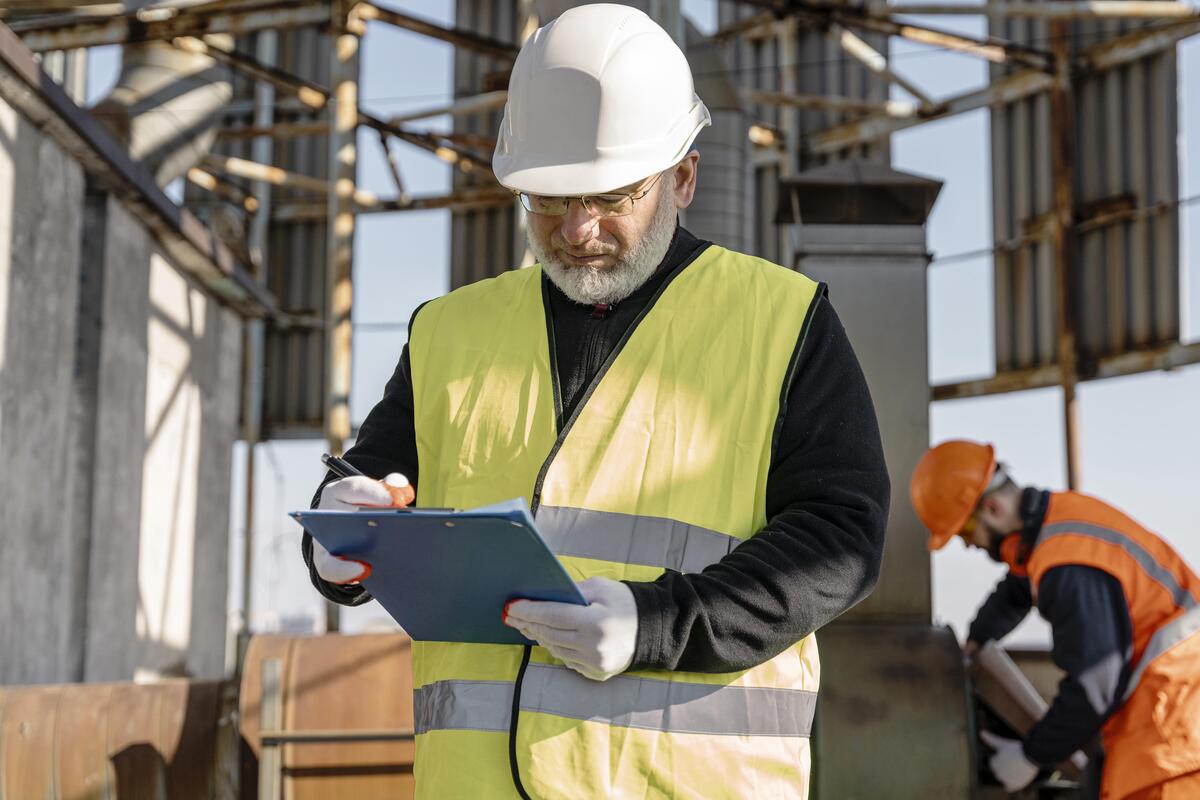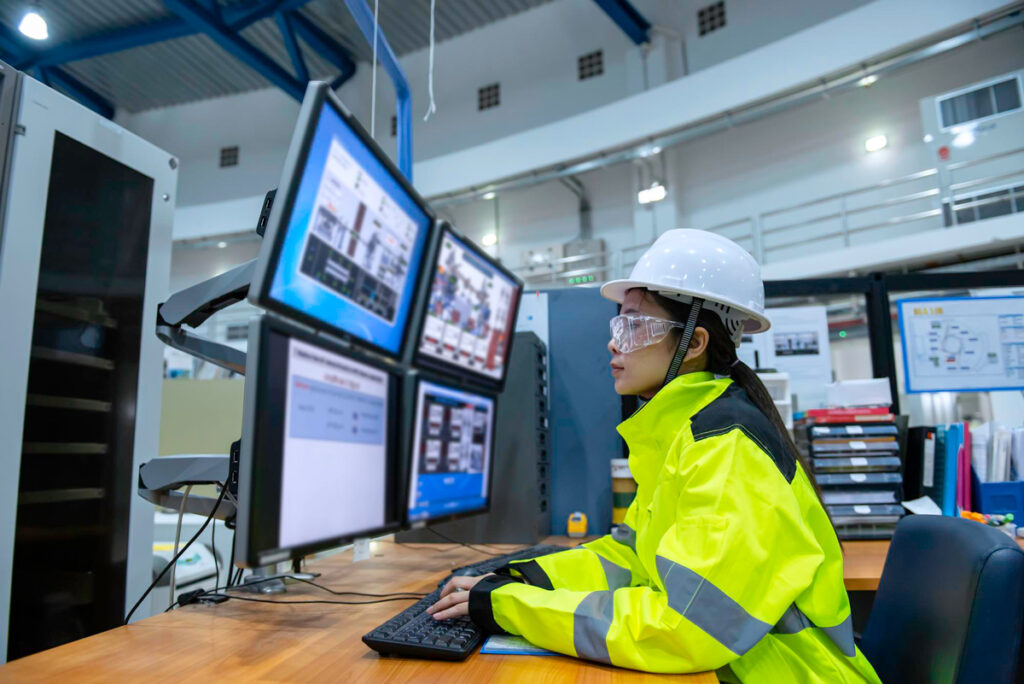Updated by Nazanin Ghodsian, 05/01/2025
Construction monitoring plays a pivotal role in the successful execution of construction projects, ensuring adherence to timelines, budgets, and quality standards. According to industry reports, the global construction industry is projected to grow significantly, with infrastructure investments expected to reach $9 trillion annually by 2025. However, amidst this growth, construction monitoring systems face numerous challenges that can impede project efficiency and profitability.
Construction monitoring faces a wide range of difficulties, from issues with resource allocation and regulatory compliance to technology constraints and complex data administration. These challenges in construction monitoring emphasize the necessity of creative solutions and successful tactics to maintain projects on schedule. This essay examines the main issues in construction monitoring and provides workable solutions, emphasizing the integration of cutting-edge technologies, enhancing communication, and guaranteeing tight compliance. In an ever-changing business landscape, professionals can improve project outcomes and lower risks by proactively addressing these challenges in construction monitoring.
Table of Contents
Key Challenges in Construction Monitoring
Construction monitoring is a critical component of any successful project, ensuring that all phases of the construction process are executed according to plan, within budget, and on schedule. Effective monitoring involves tracking progress, quality, compliance, and safety, making it a multifaceted and often complex task. However, several challenges can hinder the effectiveness of construction monitoring, ranging from technological constraints to resource management issues. Understanding these challenges is essential for implementing strategies that can mitigate their impact and ensure the smooth execution of construction projects.
1. Technological Limitations
- Outdated Systems: Many construction projects rely on legacy systems that are not equipped to handle modern monitoring needs.
- Integration Issues: Integrating new technologies with existing systems can be complex and costly.
- Lack of Technical Expertise: There is often a shortage of skilled personnel who can effectively manage and utilize advanced monitoring technologies.
2. Construction Data Management and Analysis
- Data Collection: Gathering accurate and timely data from various sources on a construction site can be challenging.
- Data Storage: Managing and storing large volumes of data securely is a significant concern.
- Data Analysis: Extracting actionable insights from the collected data requires advanced analytical tools and expertise.
Suggested article to read: Construction Monitoring in Project Management Tools; 2025 Guide
3. Communication and Collaboration
- Stakeholder Communication: Ensuring effective communication among all stakeholders, including project managers, workers, suppliers, and clients, can be difficult.
- Collaboration Tools: Many construction projects lack the necessary collaboration platforms to facilitate seamless teamwork.
4. Compliance and Regulatory Issues
- Regulatory Changes: Keeping up with constantly changing regulations and standards in the construction industry is a continuous challenge.
- Compliance Monitoring: Ensuring that all aspects of the project comply with local, national, and international regulations requires diligent monitoring.
Suggested article to read: The Role of Construction Monitoring in Risk Management; 2025 Guide
5. Resource Management
- Labor Management: Managing the workforce effectively, including scheduling, training, and productivity, is crucial but challenging.
- Material Management: Ensuring that the right materials are available at the right time without overstocking or understocking is a constant balancing act.
- Equipment Management: Properly maintaining and utilizing construction equipment to avoid downtime and ensure efficiency is essential.
6. Budget and Time Constraints
- Budget Adherence: Sticking to the budget is a major challenge due to unforeseen costs and resource allocation issues.
- Scheduling Delays: Delays due to weather, supply chain disruptions, or other unforeseen events can severely impact project timelines.
- Cost Overruns in Construction: Unanticipated expenses can lead to significant cost overruns, affecting the overall profitability of the project.
Suggested article to read: Top 7 Construction Workforce Management Software Solutions for 2025 | Understanding GDPR in Worker Monitoring (2025)

Strategies to Overcome Challenges
Addressing the myriad challenges in construction monitoring requires a multifaceted approach, combining technological advancements, improved management practices, and proactive planning. Here are some effective strategies to overcome these challenges:
1. Adopting Advanced Technology
- Building Information Modeling (BIM): Implementing BIM allows for comprehensive project visualization and coordination, reducing errors and enhancing collaboration.
- Internet of Things (IoT) Devices: Utilizing IoT devices for real-time monitoring of site conditions, equipment usage, and worker safety can provide invaluable data and insights.
- AI and Drones in Construction: Leveraging drones for site surveys and inspections and using AI for predictive analytics can improve accuracy and efficiency in monitoring processes.
2. Improving Data Management
- Robust Data Management Systems: Investing in advanced data management systems can ensure that data is collected accurately, stored securely, and easily accessible for analysis.
- Data Security Measures: Implementing strong cybersecurity protocols protects sensitive project data from breaches and unauthorized access.
- Predictive Analytics: Using predictive analytics tools can help forecast potential issues and make data-driven decisions to enhance project outcomes.
Suggested article to read: Building Energy Monitoring Systems; Guide to 2025
3. Enhancing Communication and Collaboration
- Project Management Software: Utilizing comprehensive project management platforms like Procore or PlanGrid can streamline communication and coordination among stakeholders.
- Regular Meetings and Updates: Conducting regular project meetings and updates ensures that all team members are informed and aligned on project progress and changes.
- Clear Communication Protocols: Establishing and enforcing clear communication protocols can prevent misunderstandings and ensure timely information sharing.
4. Ensuring Compliance and Staying Updated
- Regulatory Monitoring Systems: Implementing systems that track regulatory changes can help ensure ongoing compliance with industry standards.
- Compliance Management Tools: Using compliance management tools can streamline the process of tracking and documenting adherence to regulations.
- Continuous Education: Providing ongoing training and education to staff on regulatory requirements and best practices can keep the team updated and compliant.
Suggested article to read: Construction Monitoring Solutions: Your Complete Guide
5. Effective Resource Management
- Training and Upskilling: Investing in the training and upskilling of workers ensures they have the necessary skills to operate efficiently and safely.
- Resource Planning Tools: Utilizing tools for effective resource planning and allocation can optimize the use of labor and materials, reducing waste and improving productivity.
- Supply Chain Management: Implementing robust supply chain management practices can ensure timely availability of materials and prevent project delays.
6. Managing Budget and Time
- Cost Estimation and Budgeting Tools: Using advanced cost estimation and budgeting tools can help create more accurate project budgets and monitor expenses effectively.
- Effective Scheduling Practices: Implementing efficient scheduling practices and using tools like Gantt charts can help keep the project on track and identify potential delays early.
- Contingency Planning: Preparing for contingencies by setting aside a portion of the budget and having backup plans can mitigate the impact of unforeseen issues.
Suggested article to read: 5 Workers Monitoring Solutions in Construction Industry

Conclusion
Navigating the challenges of construction monitoring requires a strategic blend of technological innovation, robust management practices, and meticulous attention to detail. From overcoming technological limitations and enhancing data management to fostering effective communication and compliance with regulations, each challenge presents an opportunity for improvement and efficiency in project execution.
By adopting advanced technologies like BIM, IoT, and AI, and implementing rigorous data security measures and compliance management systems, construction teams can streamline operations and minimize risks. Moreover, prioritizing resource management, budget adherence, and proactive scheduling ensures projects stay on track and within budget.
Ultimately, by addressing these challenges head-on and implementing the recommended strategies, construction projects can achieve higher levels of productivity, quality, and safety, paving the way for successful outcomes in an increasingly complex industry landscape.
FAQs
What are the Main Technological Challenges in Construction Monitoring?
- Answer: The main obstacles include outdated systems, problems integrating new technologies, and a lack of qualified staff.
How can Data Management be Improved in Construction Monitoring?
- Answer: To get greater insights, spend money on sophisticated data management tools, make sure your data is secure, and apply predictive analytics.
What are Common Communication and Collaboration Issues in Construction Monitoring?
- Answer: Among the difficulties are inadequate collaboration tools and poor stakeholder communication.
What Compliance Challenges do Construction Projects Face?
- Answer: One of the biggest issues is staying on top of regulatory changes and making sure that all applicable requirements are followed.
How can Resource Management Issues be Addressed in Construction Monitoring?
- Answer: Enhance labor administration, maximize the use of supplies and machinery, and uphold efficient scheduling procedures.
Suggested article for reading:
7 Innovative Construction Robotics Changing the Industry
Digital Transformation: The Role of 5G Technology in Construction
12 Cutting-Edge Technologies in Construction Automation You Need to Know
What is Work Breakdown Structure (WBS) in Project Management & How to Create one? (2025)
What is Financial Management in Construction; Comprehensive Guide 2025
Resources:
EZO.io | Opticvyu | Buildern | LetsBuild | ResearchGate
For all the pictures: Freepik



